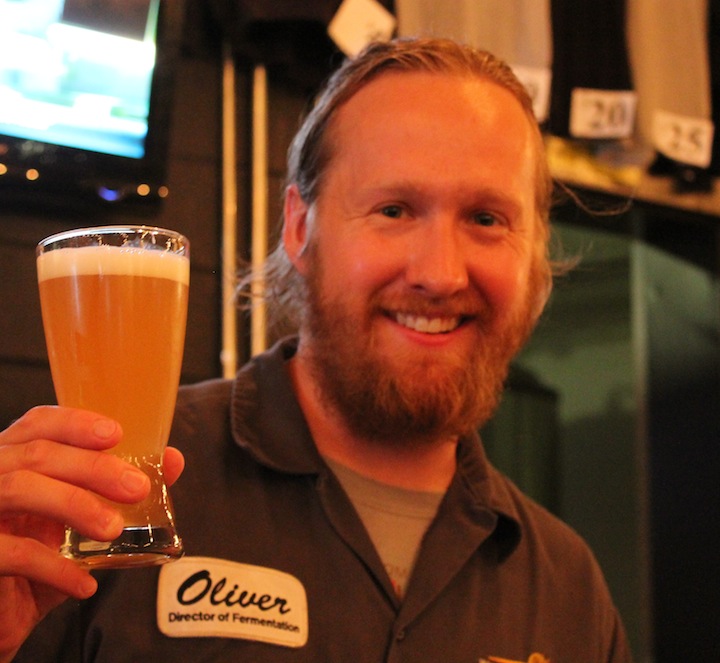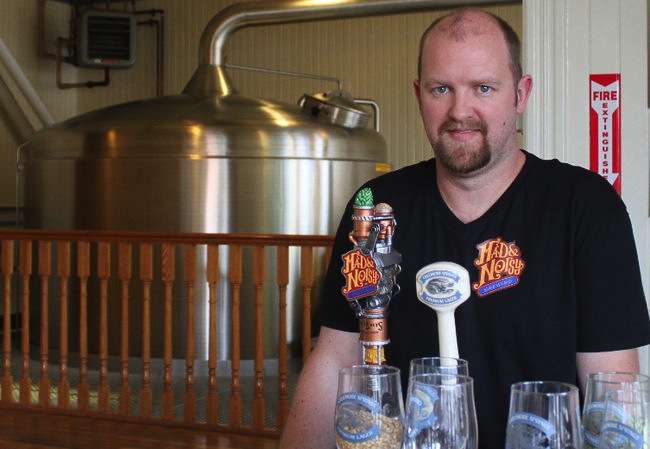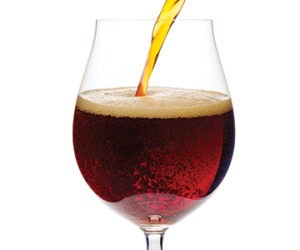India Pale Lager Roundtable
 Bryan Egan
Bryan Egan
Creemore Springs BreweryCreemore, Ontario
Bryan is the Production Manager for Creemore Springs Brewery as well as the Brewmaster for its Craft Beer Exploration Series called Mad & Noisy Brewing. He has been working in the brewing industry for 10 years, in 3 different breweries, and holds diplomas in brewing and beverage packaging from the Institute of Brewing and Distilling.
 Justin Fay
Justin Fay
Base Camp Brewing CompanyPortland, Oregon
Justin is the Brewmaster and Owner of Base Camp Brewing. Justin began brewing for Klamath Basin Brewing Co. in 2006, while enrolled in Oregon State University’s Fermentation Science program. He graduated from the program later that year and on the strength of his recipes and exacting attention to detail, KBBC shared top honors at the 2008 West Coast Brew Fest with five top-three recipes. In 2010, recently relocated to Portland, Oregon, Justin threw all his energy into starting Base Camp Brewing. Justin’s brewing style produces unique beers that bring tradition and innovation together.
 Tony Hansen
Tony Hansen
Short’s Brewing CompanyElk Rapids, Michigan
Tony is the Head Brewer at Short’s Brewing Co. Tony met Joe Short while attending a homebrew club meeting in late 2006. Joe expressed an inspiring vision of what brewing could be and offered Tony a part-time job as a pub brewer. In 2007, Tony’s role quickly transformed into the lead brewer position at the brewpub in Bellaire, Michigan. Since 2009, Tony has managed production operations in the Elk Rapids production brewery, overseen pub production along with R&D brewing, and designed the beer, the branding, and the names for many of Short’s brews.
 Jack Hendler
Jack Hendler
Jack’s Abby BrewingFramingham, Massachusetts
Jack is the Head Brewer and Co-owner of Jack’s Abby Brewing. Like many American craft brewers, Jack started as a homebrewer in college. From there he earned a joint diploma in brewing technology from the Siebel Institute in Chicago and Doemens Academy in Germany. Before opening the brewery with his brothers, Jack was the Head Brewer at Canal Street Boston Beer Works in Boston. The name “Jack’s Abby Brewing” is a nod to Jack’s wife, Abby, and also to the traditions of the European monks who handcrafted beer in their abbeys.
 Oliver Roberts
Oliver Roberts
Wolverine State Brewing CompanyAnn Arbor, Michigan
Oliver began homebrewing in 2000 before attending Oregon State University’s Food Science Program to specialize in Fermentation Science. Later, through his hometown connections, he was hired to be the Head Brewer for Wolverine State Brewing, then a contract brewing company looking to have their own brick and mortar production facility. Oliver is in charge of all brewing operations and development at Wolverine State. Since opening in November of 2010, Oliver has brewed 50 different styles of beer at Wolverine State — 95% of which are either classic or new takes on lager styles.
As hoppy beers have become the trend — or obsession even — of craft beer lovers over the years, it has become hard to find a brewery in the United States that does not brew their own version of the IPA. But traditional IPAs are not always enough to quench the thirst of hopheads looking for new and different hop-forward flavors and aromas — leaving brewers constantly adding more hoppy options to their beer lineups. So, maybe the introduction of the India pale lager (IPL) was inevitable.
IPLs contain a similar hop characteristic as that of their popular, older cousin the IPA, but the lager yeast strain brings the character of the hops and malts even more to the forefront. As Jack Hendler, Brewer of Jack’s Abby puts it, “Craft brewers of the past few decades have begun using more neutral ale yeast strains to highlight hop flavor. IPLs go a step further because the best way to minimize yeast character and maximize hop flavor is with a lager yeast.”
The IPL style has caught on quickly over just the last year or two, as is reflected in the number of breweries adding an IPL to their arsenal. There is a lot of intrigue around the IPL, in part because the style has not been around long enough to truly be defined. The Beer Judge Certification Program has not (yet) identified the India pale lager as a style. The characteristics of an IPL are unlike any lagers it does identify. The IBUs of an IPL vary, but are generally in line with IPAs from 45-70 (and greater in double IPLs). The hoppiest lager recognized by the BJCP is the German Pilsner, coming in at 45 IBUs. Giving a brewer the opportunity to explore such unchartered territory is one that many cannot resist, whether they’re brewing commercially or in their basement.
If you are a homebrewer considering your own twist on the hoppy lager, read what these experienced pros have to say before you get started. Their advice may make all the difference in your groundbreaking brew.
What is it about IPLs that are attracting more and more brewers to come out with their own version?
Bryan Egan – I think it’s two things. There’s a lack of definition to the style, allowing brewers to make their own interpretation and get a little creative with it. There’s also the idea that you can make something different from the IPAs that have popularized craft brewing the last few years, but every bit as flavorful and enjoyable.
Justin Fay – India pale lagers are a great bridge for many craft beer drinkers; so many people are very familiar with a good IPA, but are less so with the rest of the craft beer universe. We’ve found that our In-Tents IPL is opening the eyes of lots of beer geeks and craft newbies alike, delivering the big hoppy and malty beer that they’ve come to love in an IPA but with a new way to deliver that same satisfying experience. This beer shakes up the expectation of what a lager is. It’s educational!
Tony Hansen – Mainly, I think brewers are attracted to IPLs because it’s a fairly new style that is still open to interpretation. There is still room to brew an exciting, unique version that will be new to everyone drinking it.
Jack Hendler – I believe that India pale lagers are the inevitable product of the most recent trend in hoppy beers. Craft brewers of the past few decades have begun using more neutral ale yeast strains to highlight hop flavor. IPLs go a step further because the best way to minimize yeast character and maximize hop flavor is with a lager yeast.
Oliver Roberts – The attraction of craft lagers in general is catching on as more and more breweries are diversifying their beer lineups to include more lagers. Straying from the more traditional ale brewery model gives a brewer something else to talk about. An IPL-style beer is a natural progression as the style is not saturated like the IPA segment. Plus, people love hops!
What kind of hops do you like to use for an IPL?
Bryan Egan – I use a blend of English and American varieties. Willamette, Glacier, Cascade, Target, and Fuggle. This was done to pull elements from both the traditional English IPA as well as the more assertive American IPA styles.
Justin Fay – In our In-Tents India Pale Lager, we use Summit for bittering, then ZythosTM, Centennial, Glacier, and Mt. Hood in the lager tank for flavor and aroma; it really comes down to what you want for your beer.
Tony Hansen – I prefer to use American varieties that lean towards heavy citrus flavors, sometimes blending some piney or dank notes in. I don’t care for spicy or earthy varieties to be the main flavor in my hop-forward beers.
Jack Hendler – We prefer using the most aromatic American hops we can get our hands on. When brewing with a lager yeast, even the subtlest hop flavors can shine.
Oliver Roberts – We stick to traditional American varieties found in big, citrusy, fruity IPAs — like Cascade, Chinook, and Columbus. We have a different dry hopping method where we use higher alpha, dual-purpose hops, rather than aroma varieties typically used for dry hopping.
What considerations must be put into selecting hops for an IPL?
Bryan Egan – You must consider the flavor profile you are looking for and the hops available to you. If you have a thinner “lager-like” grist bill you may want more bitterness with a sharper piney aroma. A beer with a heavier, sweet or roasted malt backbone may blend better with some softer tropical or earthy aromas.
Justin Fay – In considering hops for our In-Tents IPL, we started by trying to pin down the kind of hop character we’d like — and would fit well — in the finished beer. SummitTM hops work nicely for bittering, thanks to their good alpha levels, and the high-trellis crops from the Yakima Valley present particularly well. We wanted the beer’s malt bill and oak character to shine through, and avoid going overboard with too much palate-smothering soapy hop taste; our obvious choice was to deliver all that good hoppiness via dry hop additions.
Tony Hansen – Keep in mind that the hops will be significantly prom-inent in this style of beer, so choose each variety wisely! Also, I’d suggest going lighter on the bittering addition to let the flavor and aroma additions shine.
Jack Hendler – Think outside the box. I know that centuries of brewing say only noble hops can go in lagers, but it’s for no other reason than, “because I said so.” Or as my German brewing professor so eloquently put it, “This is fact.” — it’s not.
Oliver Roberts – It is less about the types of hops, but how they are used. We stay away from overuse of hops that are more resinous or piney. We tried a few different varieties early on and found that good ol’ Cascades worked best with our yeast to bring out the flavors and essence of that hop.
Do you do dry hopping, late wort hop bursting or any other different techniques?
Bryan Egan – We do a late wort hopping in the whirlpool as well as using whole leaf hops in a hopback. We prefer the hopback method to dry hopping because it gives a fuller and smoother hop flavor because the wort spends a little less time on the hops and really only dissolves the oils into the beer.
Justin Fay – Lots of dry hopping.
Tony Hansen – We have done it all when it comes to hops. I am a big fan of blending hops and hop bursting in our IPLs. I also like to use unconventional hop addition times.
Jack Hendler – All of the above, plus a hopback. We tend to minimize bittering addition and use the majority of our hops at the end of the boil, hopback and dry hopping. When adding hops at the end of a boil on a commercial scale we find that we will get almost full bittering contributions.
Oliver Roberts – Our process for Gulo Gulo IPL was a work in progress trying from the outset. We first found hops we liked then tweaked the process. It ended up where we shifted a lot of the IBUs into late kettle additions, hopping in the whirlpool, and we employed a slurry method for dry hopping using an old chocolate melter with a mixing arm. It certainly gave us more aroma than just dropping pellets in the top of a fermenter.
Do you use a different grain bill for an IPL than a traditional lager?
Bryan Egan – We use a very different grain bill. The goal of our IPL was to create a beer that could play in the same space of an IPA because we are largely a lager brewery. The decision was to do everything we would have done for an IPA in the brewhouse and then ferment at lower temperatures with a lager yeast and provide 2–3 weeks of lagering before packaging.
Justin Fay – As with any beer, your ingredients are very dependent on what you’re going for! In our In-Tents IPL, we use Vienna, naked oats, crystal C30, and melanoidin. We tweaked the grain bill over about a two-year-long recipe development process. The resulting recipe really delivers exactly what we were hoping for.
Tony Hansen – I keep it pretty close to a traditional lager recipe, but I have not used any adjuncts like rice or corn. . . yet.
Jack Hendler – For extra-hoppy American-hopped IPLs, a neutral 2-row malt works best to minimize competing flavors. Why buy expensive and unique base malt when those flavors will only get muted out and negatively affect the hop character?
Oliver Roberts – Our IPL recipe is one of the most basic in our portfolio. Pale ale malt base, some wheat, mid-range caramel malt, and we use about 10% brown rice syrup to boost the ABV a smidge and keep the crisp edge. The grain bill gave us such a nice malty backbone that we were able to load up on the hops without taking out any of the malt goodness.
What type of balance are you looking for in your IPL?
Bryan Egan – Perfect balance. There is a lot of residual sweetness to match nicely with the 60 IBUs and abundant hop aroma. Roasted flavors were kept to a minimum but there is some nuttiness in the background as well.
Justin Fay – Our In-Tents IPL has a deep and complex malt character that provides the backbone you need for a full-of-hoppy-goodness beer. Clocking in at 55 IBUs, the IPL is solidly bittered but still lets through all the specialty malts we use. An additional layer in the In-Tents is a bit of in-house milled and toasted red and white oaks that we add in lager; this adds some vanillin sweetness and body to the mid-taste, then a nice tannic astringency to keep everything light and clean on the back end. Riding over all of this is a piney, floral, touch-of-citrus hop aroma that ties everything together.
Tony Hansen – We normally like to go heavy on the hops here at Short’s. But, with an IPL, we dial the bittering addition back a bit and concentrate more on heavy flavor and aroma additions.
Jack Hendler – Balance can come in many forms, it’s not just a malt-to-hop balance. You can balance bitterness with aroma, yeast flavor with hops, malt with alcohol, etc. Most of our IPLs tend to minimize malt and highlight hops.
Oliver Roberts – When it comes to balance I chose to make the Gulo Gulo IPL a simple experience with nuances throughout. An intense hop aroma with sweetness and light alcohol, followed by a meld of malt and big hop flavors, and finishes with a lingering bitterness that doesn’t overpower your palate but satisfies the desire for some tongue lashing. Each part of the experience needs to be balanced, if one of the elements stands out it can detract from the rest of them.
What type of yeast do you use in your IPL? What yeast strains would you recommend for a homebrewer making an IPL?
Bryan Egan – We use our house lager yeast and a fermentation profile almost identical to the one used for our premium lager. I would recommend a yeast that ferments as cleanly as possible so that the hops remain the hero of the beer and malt can be used to achieve whatever balance is desired. I would also recommend being aware of the alcohol tolerance of the yeast if you are looking to make something over the 5.5% ABV range.
Justin Fay – Again, it really comes down to what you’re going for. We use our in-house lager yeast strain. It’s robust, consistent, and contributes a unique yeast character into our finished beer that’s just perfect for the In-Tents. We’d recommend that a homebrewer try a number of different yeasts before deciding that any one of them is “the one.”
Tony Hansen – We primarily stick with a standard American lager strain. However, we have recently used a Bohemian Pilsner strain for a black session IPL that we were very pleased with.
Jack Hendler – Use any lager strain that has worked well for you in the past. Our ideal yeast has high attenuation, clean fermentation profile, and will drop brite during lagering. The yeast flavors should take a backseat to your other ingredients.
Oliver Roberts – We started off using a bock yeast specifically for the IPL and it had a lot of balance in the flavors. When we had a culture that didn’t do well, we switched to our house lager yeast and were pleasantly surprised by the fruitier aromas we got. It was like “WHOA! Where did that come from?” I won’t say the yeast specifically, but it’s from Mexico
. . .
What temperature do you ferment at? For how long?
Bryan Egan – Fermentation starts at 51 °F (11 °C), free rises to 54 °F (12 °C) until fermentation is 60-70% complete, then free rises again to 56 °F (13 °C) and is held until fermentation is complete. This will take 6-7 days.
Justin Fay – Mid-50s Fahrenheit (12-13 °C) works well for our yeast and the IPL. We hit about seven days for primary fermentation and then an additional 2+ weeks in the lager tank.
Tony Hansen – We ferment at 54 °F (12 °C) with the American lager strain and dial it up to 58 °F (14 °C) with the Bohemian strain. We try to condition our IPL for at least 2 weeks after transferring into the secondary.
Jack Hendler – Ferment at normal lager temperatures 50-55°F (10-13 °C). Allow the beer to warm up to 60 °F (16 °C) the last day of fermentation. This will allow for a diacetyl rest, but more importantly the warmer temperature is better for a dry hop flavor extraction. This is an odd caveat for lagers because dry hopping works best the warmer the product.
Oliver Roberts – Our lagers typically start in the 50-52 °F (10-11 °C) range but we do our IPL between 52-55 °F (11-13 °C). The Gulo Gulo IPL has a five-day primary, 5- to 10-day diacetyl rest raised by ambient tem-peratures, then slowly chilled one degree Fahrenheit per day until we hit 38-42 °F (3-6 °C). We dry hop it and let it sit on the hops for about 7-10 days. Lastly, we filter onto whole leaf hops in the bright tank before packaging.
What advice could you give homebrewers who have never made an IPL?
Bryan Egan – Be creative. There are no constraints with this style, so make it the way you think an IPL should taste. Make it something you will enjoy drinking.
Justin Fay – Same as any other beer — have fun and share what you brew! We put a lot of love and effort into developing our IPL; it was a really fun project to flex our creative muscle.
Tony Hansen – Don’t overthink it; it’s just a hoppy lager, but avoid harsh bitterness.
Jack Hendler – Like I said before, think outside the box. Lager doesn’t mean yellow fizz. Everything you’ve ever believed about “lager” need not apply (because it’s not true). It can be anything you want it to be.
Oliver Roberts – In brewing an IPL, I would say consider your yeast and your hops first. Use a yeast strain you are familiar with if possible. Then go ahead and use a typical malt bill for an IPA. Lastly, focus on flavor and aroma additions in the kettle, dry-hop liberally, and move the beer along. If you ferment cold you don’t necessarily need to lager for all that long to mature the beer.
What potential pitfalls should a homebrewer creating their first IPL look out for?
Bryan Egan – Don’t get too out of balance. IPAs work because of a strong malt backbone to work with the bitterness. Thinning out the sweetness and maltiness too much could bring a whole new definition to the term hop-bomb.
Justin Fay – Out-of-whack hop character. “More” doesn’t always mean “Better.” Seek balance; hopefully you’ll be able to pick up malt and fermentation character amongst that wonderful hop character.
Tony Hansen – Remember to give your IPL a healthy diacetyl rest just like any other lager. You don’t want a bitter butter bomb.
Jack Hendler – The key to an IPL versus an IPA is the fermentation. If you can’t control the temperature well, it may not be worth the effort to use a lager strain.
Oliver Roberts – Over-hopping for bitterness could be an issue because of the crisp, dry character that can come with lager yeasts. The bitterness can completely deter from the rest of the hops if it dominates. Also, oxidation from dry-hopping could be a concern. If I were still homebrewing I would put my hops into another vessel, rack the beer onto the hops and purge the vessel with CO2 beforehand.
 Bryan Egan
Bryan Egan Justin Fay
Justin Fay Tony Hansen
Tony Hansen


